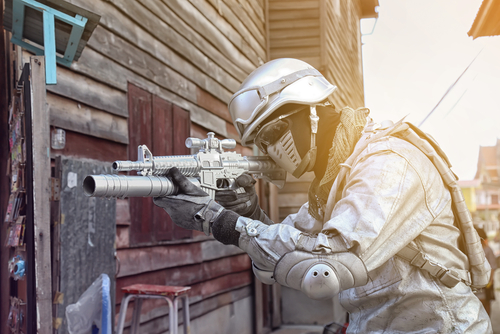
The advent of artificial intelligence (AI) has opened up a new frontier in warfare, one that is increasingly difficult to navigate due to the proliferation of deepfake visuals. This technology, which allows for the creation of highly realistic but entirely fabricated images and videos, has become a potent tool in the arsenal of conflict, particularly in the Middle East.
In the Israeli-Palestinian conflict, the use of manipulated images and disinformation is not a new phenomenon. Palestinian factions, including Hamas, have been known to use such tactics to control the narrative. However, the arrival of AI generative tools, which are easy to use and widely accessible, has escalated this information warfare to a new level.
drone warfare and AI becoming more prevalent in combat and the general warfare scene :)))) pic.twitter.com/57OEw2Xr4a
— War Wolf Fritz (@WarWolfFritzTV) October 23, 2023
Hamas, in particular, has been accused of using these tools to create false narratives. They have reportedly intimidated journalists into silence about their use of human shields and staged images of children and toys buried in rubble. The introduction of AI-generated images will only further complicate an already complex conflict rife with disinformation.
The danger of these AI-generated deepfakes extends beyond the battlefield. Dr. Tal Pavel, a cyber policy expert, has described them as “one of the biggest threats to democracy.” These deepfakes can be used to manipulate public opinion, not just during times of war, but also during election campaigns and other critical moments.
The next generation of globalist psychological warfare is to manipulate the masses with fake videos like this created with AI.
Question Everything pic.twitter.com/LWXm3GMy0d
— Machiavelli (@TheRISEofROD) October 23, 2023
Despite the sophistication of these deepfakes, they are not foolproof. There are still tell-tale signs that distinguish AI visuals from real ones. For instance, it remains challenging to synchronize visuals with audio convincingly, and small details like hands, fingers, or hair often appear unrealistic. However, these discrepancies may not be easily detectable by the human eye and require automated techniques for identification.
The use of deepfakes in warfare is not limited to the Israeli-Palestinian conflict. In Russia’s ongoing war in Ukraine, a heavily manipulated video of President Volodymyr Zelenskyy was posted on social media, falsely showing him urging his soldiers to surrender. Although the video was quickly taken down once identified as a fake, it demonstrates the potential for deepfakes to cause significant harm.
In conclusion, the emergence of AI and deepfake technology has added a new dimension to warfare, one that is fought not on the ground but in the digital realm. As this technology continues to evolve and become more accessible, it is crucial for nations and individuals alike to remain vigilant and informed, ready to discern fact from fiction in this new age of information warfare.













